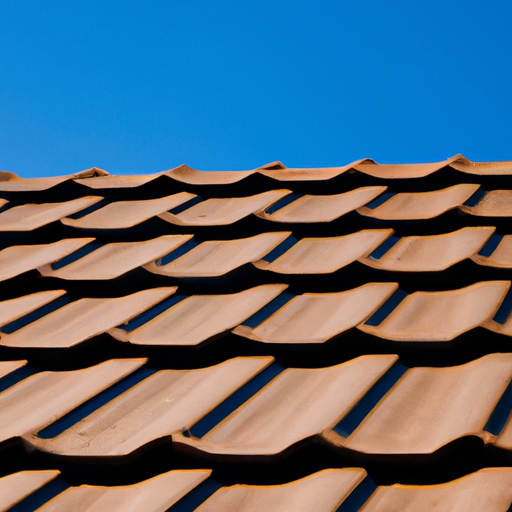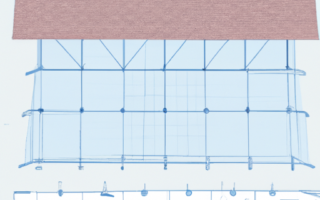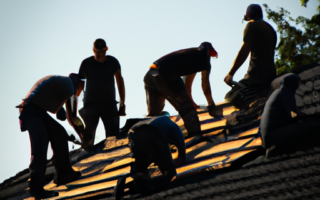Understanding the Fundamentals: The Anatomy of a Strong Roof
Understanding the fundamentals of roof construction is crucial for ensuring the strength and durability of any building. A strong and durable roof not only protects the structure from external elements but also contributes to its overall aesthetics and longevity.
When it comes to constructing a strong roof, it is essential to have a comprehensive understanding of its anatomy. The key factors that contribute to a strong and durable roof include:
1. Roof Deck: The roof deck forms the base of the roof and provides a flat and stable surface for the rest of the roofing components. It is typically made of plywood or oriented strand board (OSB) and must be correctly installed to ensure structural integrity.
2. Underlayment: The underlayment is a waterproof barrier that is installed over the roof deck to protect it from water infiltration. It acts as an extra layer of protection and aids in preventing leaks and damage caused by moisture.
3. Roofing Materials: The type of roofing material used plays a significant role in determining the strength and durability of the roof. Common roofing materials include asphalt shingles, metal panels, clay or concrete tiles, and various types of synthetic materials. Each material has its own set of advantages and considerations, such as cost, lifespan, and resistance to external factors like wind and fire.
4. Flashing: Flashing is a crucial component that prevents water from seeping into vulnerable areas such as roof edges, valleys, and chimneys. It is typically made of metal and is installed around these areas to provide an additional layer of protection against water damage.
5. Ventilation: Proper ventilation is essential for maintaining a strong and durable roof. It helps to prevent the buildup of heat and moisture, which can lead to the deterioration of roofing materials and the growth of mold and mildew. Adequate ventilation also contributes to energy efficiency by reducing the strain on HVAC systems.
6. Slope: The slope or pitch of the roof is another crucial factor in roof construction. A well-designed slope ensures proper drainage, preventing water from pooling on the roof surface. This helps to minimize the risk of water damage and extends the lifespan of the roof.
In conclusion, understanding the fundamentals of roof construction is essential for constructing a strong and durable roof. By considering the key factors such as the roof deck, underlayment, roofing materials, flashing, ventilation, and slope, one can ensure the longevity and reliability of a roof. Proper construction techniques and regular maintenance are also crucial in maintaining the strength and durability of the roof over time.
Materials and Methods: Choosing the Right Components for Long-lasting Roof Construction
When it comes to roof construction, selecting the right materials and methods is crucial for building a strong and durable roof that can withstand the test of time. The choice of components plays a significant role in ensuring the longevity and integrity of a roof. In this article, we will explore the key factors to consider when it comes to materials and methods for long-lasting roof construction.
1. Roofing Materials
The type and quality of roofing materials used are essential in determining the resilience and durability of a roof. There is a wide range of materials available on the market, each with its pros and cons. Some popular options include:
- Asphalt Shingles: These are the most common roofing materials due to their affordability and ease of installation. They come in a variety of styles, colors, and sizes, making them a versatile choice.
- Metal Roofing: Metal roofs are known for their exceptional durability and longevity. They can withstand extreme weather conditions and are resistant to fire, rot, and insects.
- Clay or Concrete Tiles: These materials offer a unique aesthetic appeal and can last for decades. They are highly resistant to fire and require minimal maintenance.
- Slate: Slate is a natural stone material renowned for its elegance and longevity. It is resistant to fire, rot, and insects, making it an excellent choice for high-end residential or commercial buildings.
2. Roofing Methods
Aside from the materials themselves, the roofing methods employed during construction also play a crucial role in creating a long-lasting roof. These methods include:
- Proper Installation: It is vital to ensure that the roofing materials are installed correctly to prevent any potential issues. Hiring experienced and skilled contractors is essential to ensure a proper installation process.
- Foundation and Structural Support: A strong roof relies on a solid foundation and adequate structural support. This includes properly installed trusses, beams, and load-bearing walls.
- Ventilation: Proper ventilation is crucial for a healthy roof. It helps regulate temperature, prevent moisture buildup, and reduce the risk of mold or rot.
- Regular Maintenance: Ongoing maintenance, such as regular inspections and repairs, is crucial for preserving the integrity of a roof. Identifying and addressing any issues promptly can prevent further damage and prolong the roof’s lifespan.
When choosing materials and methods for roof construction, it is essential to consider factors such as the climate of the area, the overall design of the building, and local building codes and regulations. Collaborating with roofing professionals and conducting thorough research can help ensure that the right components are selected for a strong and durable roof.
In conclusion, the art and science of roof construction go hand in hand when it comes to selecting the right materials and methods. By carefully considering roofing materials and employing proper construction techniques, homeowners and builders can create roofs that are not only aesthetically pleasing but also built to last.
Design and Engineering: Key Considerations for an Efficient and Resilient Roofing System
In the art and science of roof construction, one of the key factors for a strong and durable roof is the design and engineering of the roofing system. A well-designed and properly engineered roof not only enhances the aesthetic appeal of a building but also provides efficient and resilient protection against various weather elements.
When it comes to the design and engineering of a roofing system, there are several key considerations that need to be taken into account. These considerations include:
1. Structural Integrity: The roof should be designed to withstand the structural loads imposed on it, such as the weight of the roofing materials, snow accumulation, and wind forces. An experienced structural engineer can help determine the appropriate design for the roof based on the building’s location and environmental conditions.
2. Roof Pitch: The slope or pitch of the roof is another important factor to consider. The roof pitch affects the shedding of water, snow, and other debris. A properly pitched roof ensures efficient drainage and reduces the risk of water pooling, which can lead to leaks and structural damage.
3. Roofing Materials: The choice of roofing materials plays a significant role in the overall design and performance of the roof. Different materials have varying durability, appearance, and maintenance requirements. Factors such as climate, budget, and architectural style should be considered when selecting the roofing materials.
4. Insulation and Ventilation: A well-designed roofing system incorporates proper insulation and ventilation. Adequate insulation helps regulate the temperature inside the building, reduces energy consumption, and prevents the formation of condensation. Proper ventilation helps remove excess moisture, prolonging the lifespan of the roofing materials and preventing the growth of mold and rot.
5. Sustainability: In today’s environmentally conscious world, sustainability is an important consideration in roof design. Using eco-friendly materials, incorporating green technology, such as solar panels, and designing for energy efficiency can not only reduce the environmental impact but also provide long-term cost savings.
6. Maintenance and Access: Designing a roof with ease of maintenance and access in mind is essential for its longevity. Providing access points, such as roof hatches or walkways, and considering the ease of repairs and inspections can save time and costs in the future.
In conclusion, the design and engineering of a roofing system are crucial for its efficiency and resilience. By considering factors such as structural integrity, roof pitch, roofing materials, insulation and ventilation, sustainability, and maintenance, one can create a strong and durable roof that not only protects the building but also enhances its overall appeal.
Maintenance and Repair: Preserving the Integrity of Your Roof for Years to Come
Maintenance and repair are crucial aspects of preserving the integrity of your roof for years to come. Regular maintenance and timely repairs can help to extend the lifespan of your roof, prevent costly damage, and ensure optimal performance.
One of the key factors in roof maintenance is conducting routine inspections. Regularly inspecting your roof allows you to identify any potential issues before they turn into major problems. Look for signs of damage such as cracked or missing shingles, sagging areas, or water leaks. Pay attention to the condition of the flashing around chimneys, skylights, and vents, as this is a common area for leaks to occur.
In addition to inspections, it is important to keep your roof clean and free of debris. Leaves, branches, and other debris can accumulate on your roof and in the gutters, leading to clogs and water buildup. This can increase the risk of water damage and deterioration of the roof materials. Regularly clearing the roof and gutters of debris can prevent these issues.
When it comes to repairs, it is crucial to address any issues promptly. Even small leaks or minor damage can worsen over time, leading to more extensive problems and costly repairs. It is recommended to hire a professional roofing contractor for repairs, as they have the knowledge, experience, and tools to effectively fix the issue and ensure the integrity of the roof.
Another important aspect of roof maintenance is regular cleaning and treatment. Moss, algae, and other organic growth can develop on the roof, especially in areas with high humidity or shade. These growths can trap moisture, leading to deterioration of the roof materials. Regularly cleaning and treating the roof can help prevent the growth of these organisms and protect the roof from damage.
Lastly, it is essential to prioritize safety when conducting roof maintenance and repairs. Working on a roof can be dangerous, so it is important to take appropriate safety precautions such as using proper equipment, having a spotter or assistant, and avoiding working on the roof during inclement weather or slippery conditions.
By prioritizing maintenance and repair, you can preserve the integrity of your roof and ensure its long-lasting performance. Regular inspections, cleaning, timely repairs, and safety measures are all key factors in maintaining a strong and durable roof for years to come.



